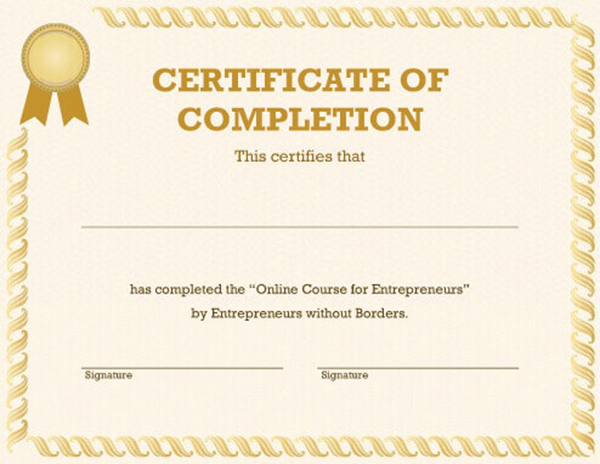Make an Online Course: How to Engage Your Students
When you decide to make an online course and apply all of your time and effort in creating it, your highest expectation is to see your students move forward and complete the course.
But in many cases, this does not happen, and we will understand why and how to change this picture.

Make an Online Course: How to Avoid High Dropout Rates
You make an online course, publish it and the first students start to sign up.
Great! So they started taking the course and everything seems to go just wonderful.
So, you look at your statistics and come the shock: people are abandoning the course. Fast.
In other words, engagement is low.
Suddenly your plan to make an online course does not look so promising. What happened? Are your classes bad?
Not necessarily …
Student involvement has little to do with the quality of your material.
In fact, you can create the best course in your niche and can still see high dropout rates.
The average completion rates for online courses are around 13%. This means that only 1 in 10 students will complete the course.
And that’s a problem for 3 big reasons:
- You do not get a chance to really help people with your course.
- Students get frustrated because they do not get results.
- You have to deal with repayments, complaints and criticisms.
Now, it is no surprise that this happens.
With the great amount of information the internet offers us every day, people’s attention span has dropped dramatically.
But blaming short periods of attention does not solve the problem. If you see such a big drop in student engagement, you have to fix it to make an online course successful.
Here are some strategies you can apply.
Public Commitment
Behavioral studies show that when people make public commitments, they are more likely to stick to them.
That is, when we tell others that we are going to do something, we are more likely to do it.
By making online courses, you can use this insight to increase student engagement. How? Get people to sign a “course commitment.”
Create a simple term, such as a statement, where the student commits himself (with himself) to follow all the modules of the course to the end, as the only way to achieve the results he expects.
It works, because it is true that those who do not strive and compromise achieve nothing.
You’d better do it at the beginning of your course, obviously. It is at that moment that your students are more motivated to act.
A written commitment may be the first of many “small wins” your students must experience as they progress through your course.
Small Victories
Most successful online courses are based on milestones, small but important steps on the way to the ultimate goal.
For example, let’s think about the milestones of a content production course for blogging. It can be something like:
- Mark 1: Learn how to do keyword research.
- Mark 2: Learn how to structure the text.
- Mark 3: Learn SEO rules.
- Mark 4: Learn how to publish text in WordPress.
- Mark 5: Learn how to analyze access data.
Do you see how each milestone is an important step in learning to produce a text for blog?
This means that student involvement starts with how you decide to make an online course, that is, how you decide to structure it.
– To-do List to Create Online Courses
Remember: people do not care about your course. They care about the outcome they will achieve.
So always explain – or rather demonstrate – why each milestone is important. Show your students how each step brings them closer to the ultimate goal they want to achieve. Show them what they will be able to do.
This is how you keep them happy, engaged, and much less likely to give up.
Certificates
What’s missing for you to make an online course highly attractive?
A great encouragement at the end, something your students can display and use as proof of what they have learned.

A certificate of completion, even if it does not have the stamp of any authority, is of great value to those who receive it, and most of the time it is valid in a job search, for example.
The good news is that there are several tools on the internet that can help you make an online course with really professional certificates such as Canva.
– How to Create a Certificate for Online Courses
For students, this is immensely rewarding. Because everyone likes the feeling of doing and completing something.
In addition, it is an easy way to provide students with a useful and tangible result. A document they can use to signal their abilities.
Engaging Content
Now we go to one of the most important aspects about make an online course: the content.
How can you ensure that people do not get distracted and lose interest in the middle of the lessons?
Here are some suggestions:
Keep Your Lessons Small
Studies show that people’s attention span has dropped a lot in recent years, reaching as little as 8 seconds.
But who really wants to pay attention can do this for a little more time, reaching about 10 to 15 minutes, according to neuroscience.
This may seem like a short time if you’re talking about quite complex subjects, but in that case, the trick is not to cover more than one topic per lesson.
In fact, it may be best to divide big topics into subtopics.
Going back to the example of the text production course for blogs, instead of a class on “SEO rules”, you could create a module with 3 lessons:
- What is SEO
- SEO basic rules
- How to optimize a text for SEO
Bet on Videos
If you want to make an online course with high conversion potential, you need to create videos.
Dynamic way of teaching something, videos are the great favorites of the online audience and have high engagement potential.
The good news is that creating videos at home is not at all difficult, and with some equipment you probably already have, such as camera and microphone, you can achieve great results.
– Learn How to Record Videos at Home
And do not worry too much about keeping a serious image, the ideal is to give a humorous and fun touch to your videos.
This makes classes more enjoyable and helps break the flow of pure information.
And be cool! Remember: many students buy your course because of you.
Teasers
Do you know how TV shows are always interrupted by commercials when the scene gets interesting?
You can use the same “teaser” strategy to make an online course more engaging.
Here’s a simple step-by-step to do this:
- At the beginning of class, tell students what they are about to learn.
- During class, comment on what you are going to teach next.
- At the end of the class, tell them what to expect in the next lesson.
Curiosity is a powerful force. And the secret to making people curious is to create an information gap.
In short: whenever there is a gap between what people know and what people want to know, there is a gap of curiosity.
Let’s say you’re teaching how to edit images in Photoshop. You could say something like:
“I just showed you how to change the size of this font. But how do you change the size of these images? I’ll show you in a second. But as we are talking about fonts, I will show you how to insert new models first”.
Notice that two information gaps have been opened: How do you change the size of the images and how do you insert new fonts.
This creates curiosity and expectation in the student.
– 7 Strategies for Setting Up a Successful Online Course
Re-Engagement Emails
When you make an online course, you may end up creating courses that are multi-week programs.
The content is split and published gradually, which means that students do not have access to all material at once.
Instead, each module is posted separately.
You may think that this further hampers engagement, but instead, the result is a higher completion rate.
Why? Because it gives you the opportunity to send re-engagement emails.
See 3 examples of this type of email:
- Welcome email (sent as soon as a new student enrolls)
- Release email (sent as soon as a new module is released)
- Completion email (when training is complete)
To keep people involved during the course, you need to continually remind them why they enrolled in the first place.
– How to Create a Successful Email Marketing Campaign
Community
Creating a supportive student community is an important action to keep your students engaged.
Doing this is quite simple:
Create a space where students can connect and communicate with each other, such as a Facebook group, a Slack account, etc.
If you are hosting your courses on Coursify.me, you can rely on the Student Area chat to promote interaction among your students and answer questions.
A support group is one of the most important things for effective learning. It gives your students the opportunity to ask questions, get feedback and share their big and small wins.
Do not forget to interact in the discussions!
People will want to interact with you and this is a great way to show your knowledge, help, create a relationship and build student loyalty.
Satisfaction Survey
People give up taking online courses for all sorts of reasons such as technical difficulties, lack of time and motivation.
But what if there’s something they are not really liking on your course? A factor responsible for most dropouts?
Well, one way to find out this is with a satisfaction survey.
Once a student finishes the course, or when someone requests a cancellation of tuition, send an email requesting that they respond to a simple satisfaction survey.
And make sure it’s simple, otherwise it’s very likely that no one will answer.
Stick to questions like:
- What did you like about the course?
- What did you not like about the course?
- What can we do to improve?
Also send reminders that, in case of any technical questions, students can contact support.
ELearning platforms like Coursify.me offer free online support.
The important thing is to make the students aware that they are being heard. They need to know that help is available when they need it.
Make an Online Course: Choose a LMS Easy to Use

Engaging students in online courses is a subject that does not receive much attention. Big mistake, considering that the goal of make an online course is to get more and more students.
Happy students = best results for you.
By choosing an eLearning platform to host your course, pay close attention to ease of navigation, after all, you want to ensure the best online learning experience for your customers.
– Learning Management System: What is it?
With a pleasant and intuitive layout, Coursify.me can be easily used by people of any age group, without needing any special knowledge for this.
Learning Management System (LMS), the platform has all the features you need to create and sell online courses, like the ability to upload content from channels such as YouTube, Vimeo and Dropbox, and integration with payment gateways such as PayPal .
Attending companies and professionals in more than 60 countries, Coursify.me is a dynamic and customizable Learning Management System.
We have three choices of plans for you to decide which best suits your needs, and the good news is that the Beginner Plan is free!
Visit our website, test the platform and make an online course right now.

